Role: UX Designer & Researcher
Company: Essent
Year: 2024
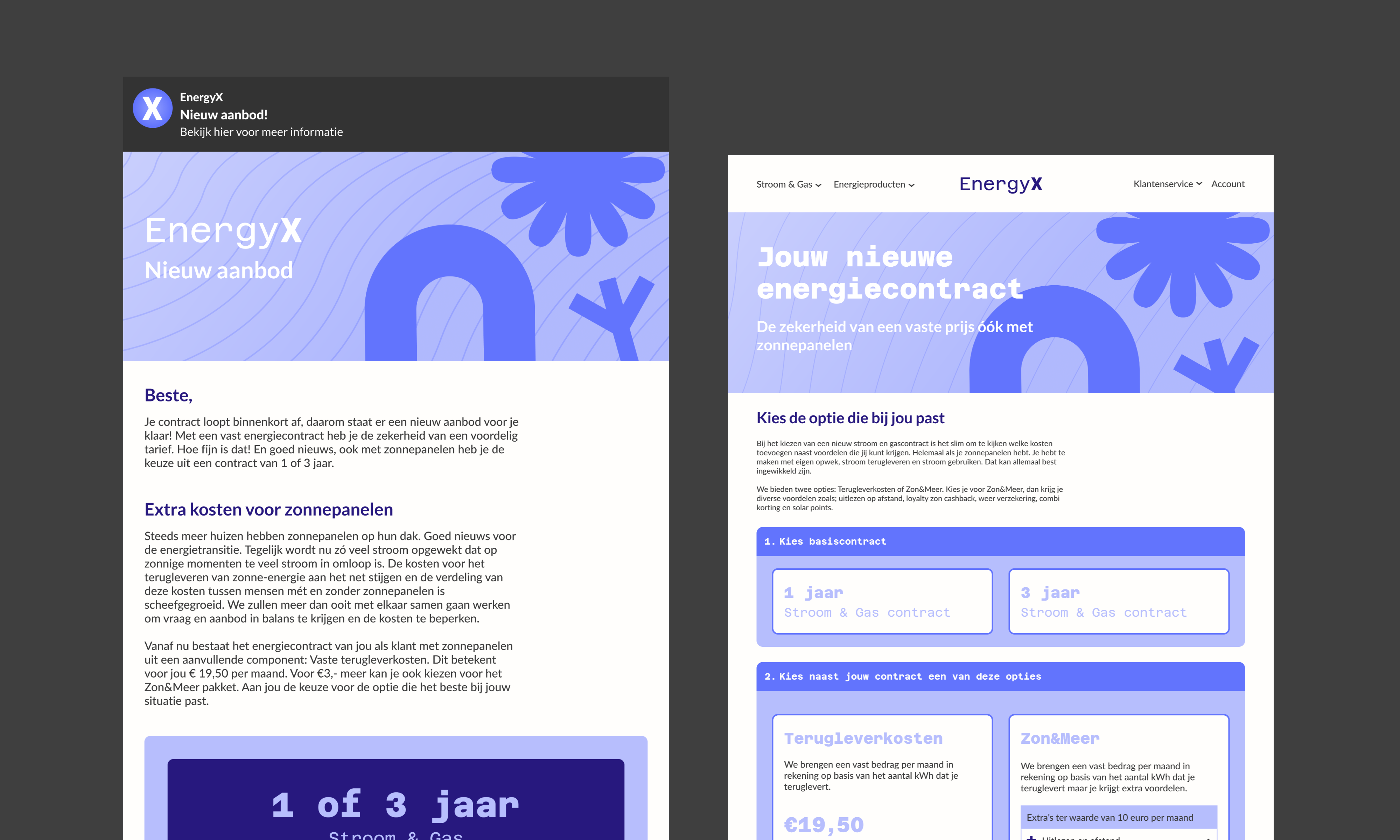
The Netherlands is one of the leading countries when it comes to the adoption of solar panels. A recent study shows an average of 3.5 solar panels per inhabitant. This adoption of solar panels is great for the energy transition and for reducing our need for fossil fuels. However, for every step forward, there are positive and negative sides. Essent and other energy companies struggle to predict the energy needs of tomorrow, next week, and next month because of the solar panels. When there is an unpredicted sunny day and Essent has bought too much energy for that day, the company has two options: sell that energy for a much lower rate than they bought it for, or get a fine from the energy infrastructure companies because there is too much supply compared to demand.
Because of these rising costs, energy companies are less inclined to sell long-term contracts and even raise prices for solar panel customers. Customers need help understanding why this is happening and are more skeptical of potential solutions. This was something we needed to solve.
It was to create a proposition to mitigate Essent's costs and give the customers enough value to accept these changes.
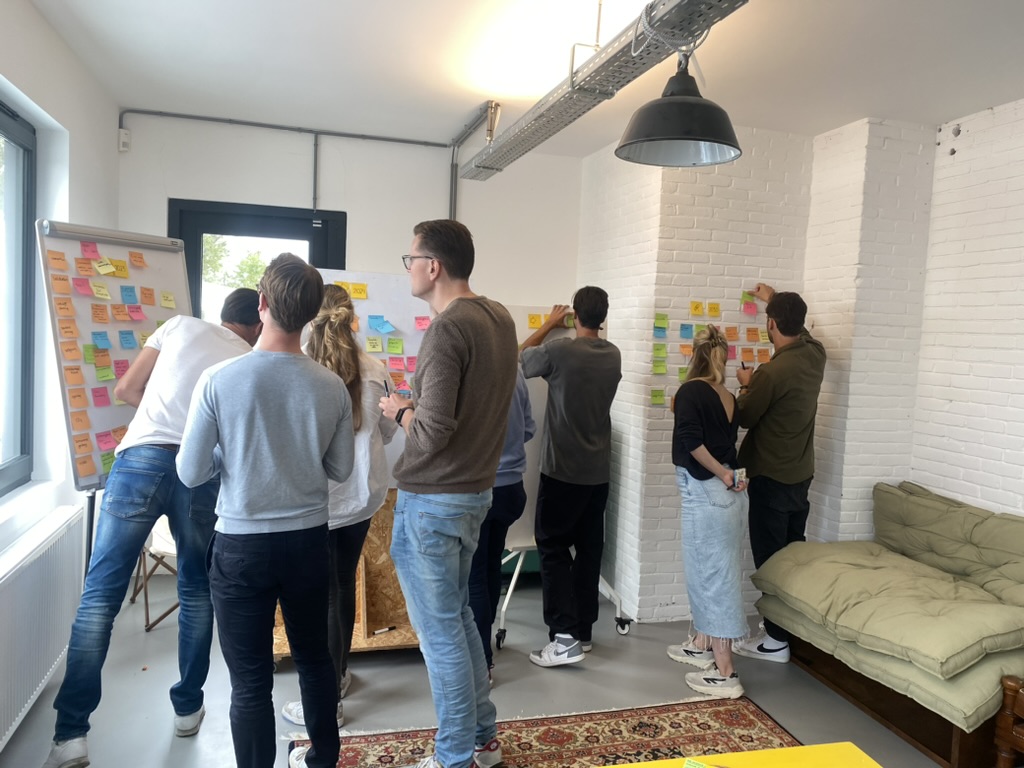
Instead of going immediately into solution mode, it was essential to take a step back. Where does this trend go, and what solution needs to be relevant in the future? These are crucial questions when a big company tries to solve a problem. You don't have the flexibility and speed of a startup.
I was part of a two-day strategy sprint where we created an overview of trends that were happening right now, next year, in four years, and in 2030. Every year, things happen, and the group had a task to write this down. After everything was written down, we clustered those stickies. These groups remained the same over the years, so this way, you can see how something changes over time.
When we saw the trend in the far future, we brainstormed a cover story vision of the potential solution using hashtags, quotes from an interview, numbers, etc. This vision was tested by asking people outside the building what they thought. We saw that it was not easy to test a vision so far from what people usually think of to get honest feedback. But there were still nuggets of feedback that we could use in the design sprint.
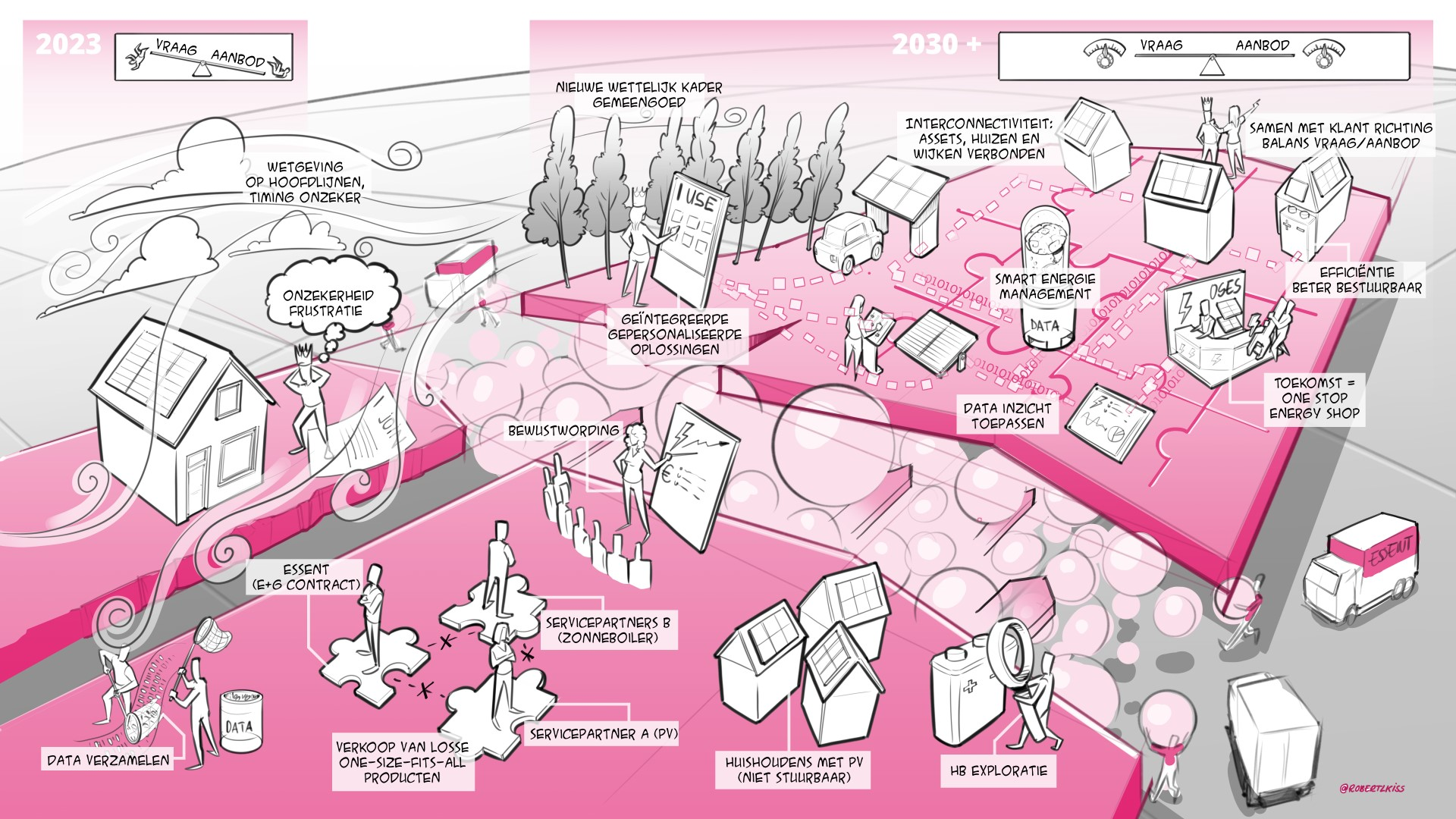
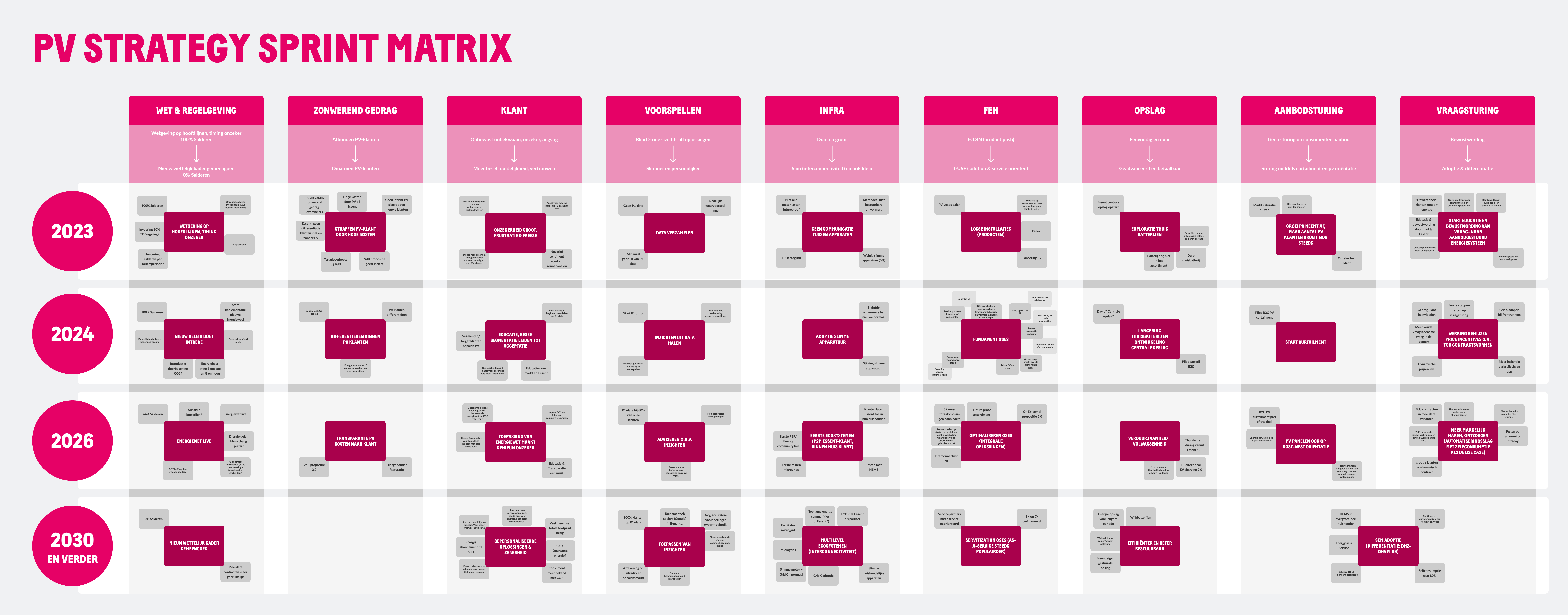
On the second day of the strategy sprint, we mainly iterated on the trends and discussed these with stakeholders. The group incorporated these conversations into a vision drawing and a more detailed visualization. Based on this vision, we were able to create 'How Might We's?' that we could use in the design sprint.
The design sprint was a few weeks after the strategy sprint, so we needed to refresh our memory. After a few lightning demos, we could attack the HMWs mentioned in the context above. We did the usual activities to ideate on the HMWs with crazy 8's and solution sketching. Remarkably, most of the final solution sketches were in the direction of a subscription model where Essent could incorporate the extra costs that solar panels bring. In exchange, we would be able to give something back.
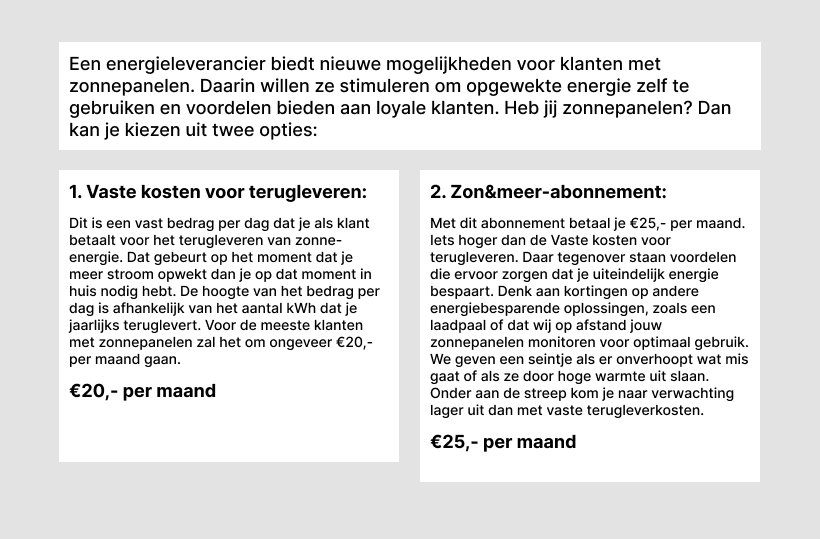
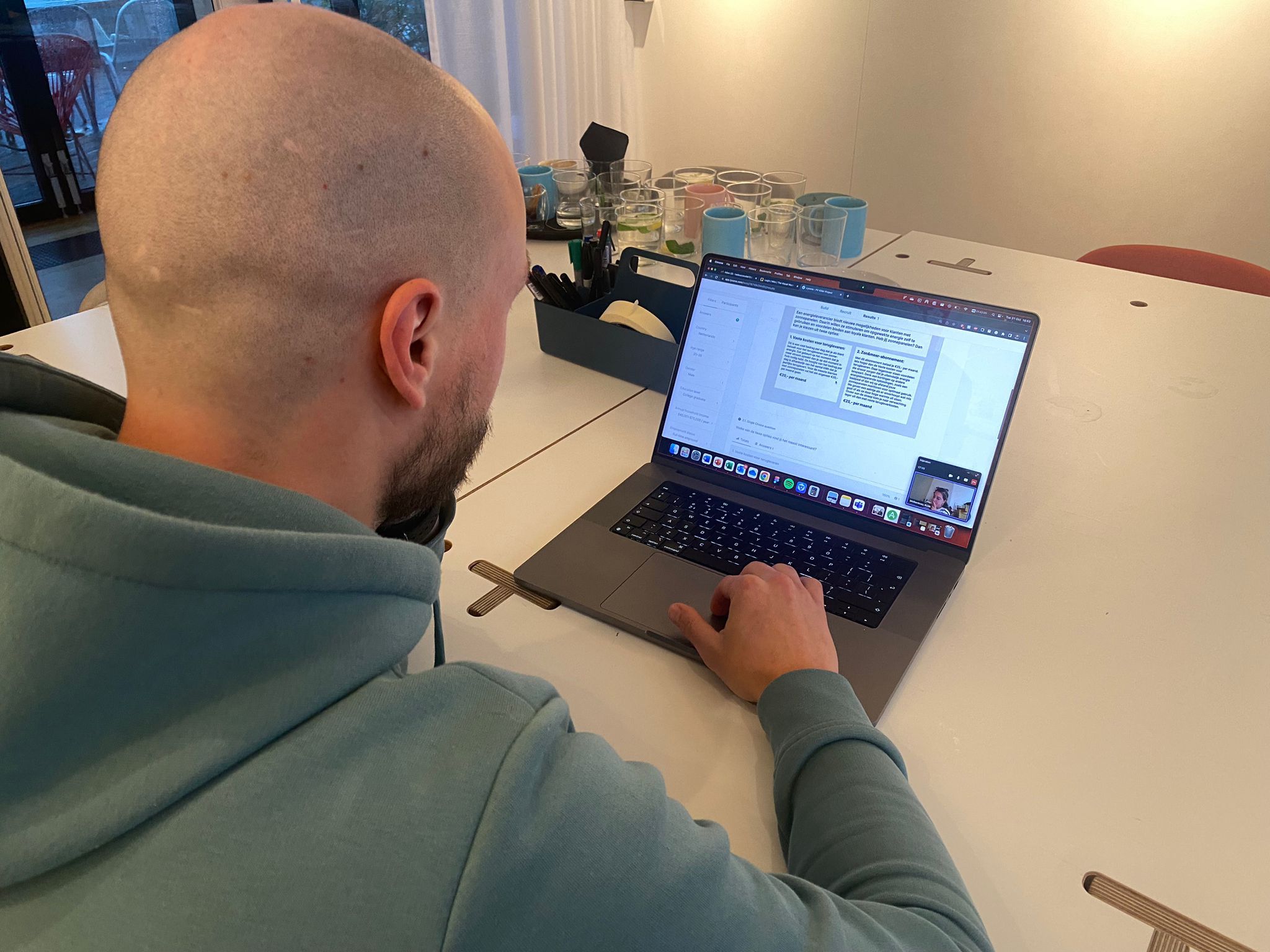
On the second day, we could compare the ideas and create something new. The idea was as follows: A solar panel customer had two options when they wanted an energy contract. The first option is a standard contract with the extra costs of redelivering energy. The other was almost the same. The differentiator was that the price was a bit more expensive, but then we could give the customer some extras, like new features, guarantees, and additional service.
We wanted to test this idea as fast as possible. So, after documenting all the assumptions we had, I created a Lyssna test where we tested the propositions as simply as possible, only in written text. At that moment, you focus on the content instead of the appearance. After the tester read the new context, they had two options. If you had to take out a new energy contract and only had these two options, which one would you take? After selecting the option, we had follow-up questions to understand the decision better.
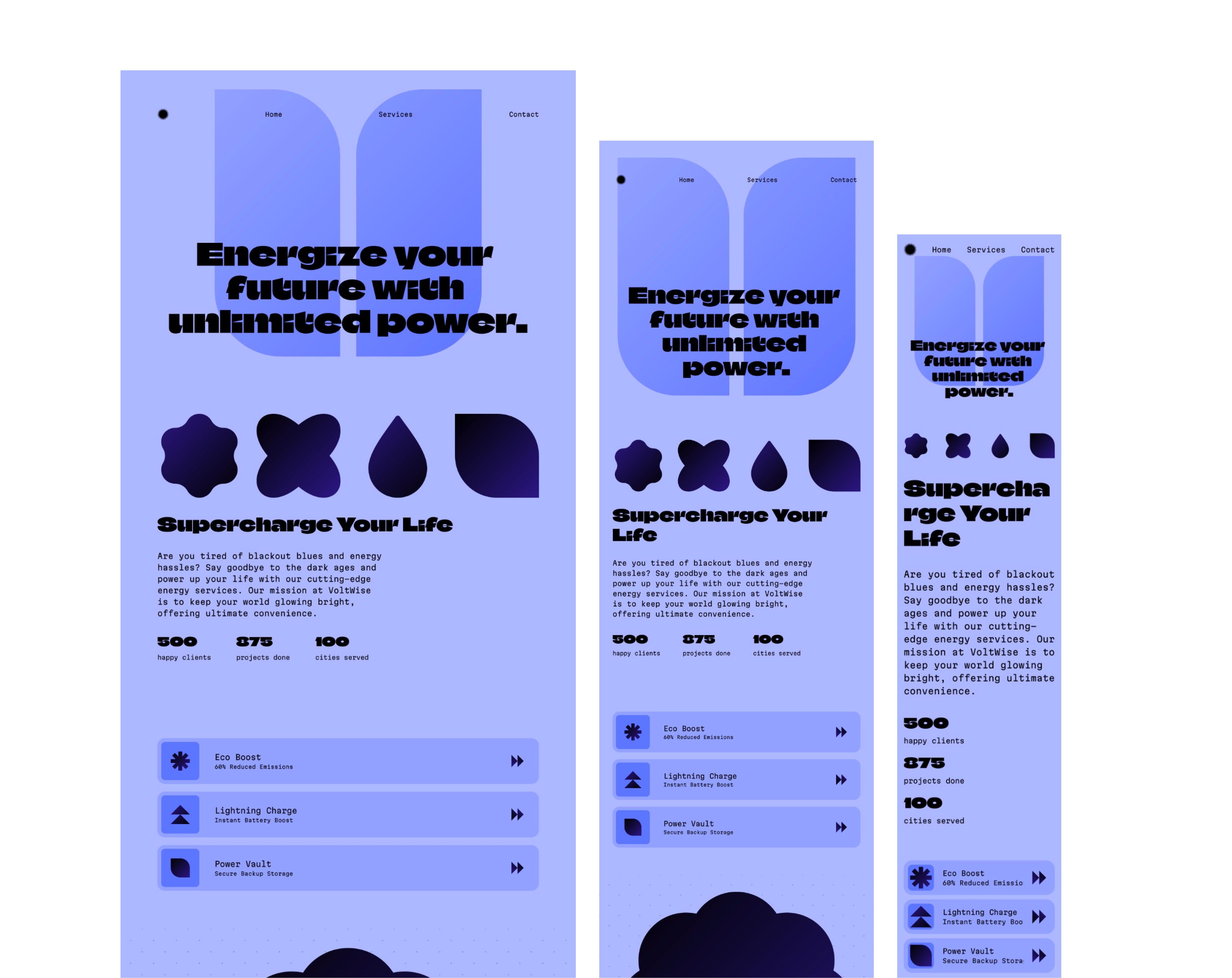
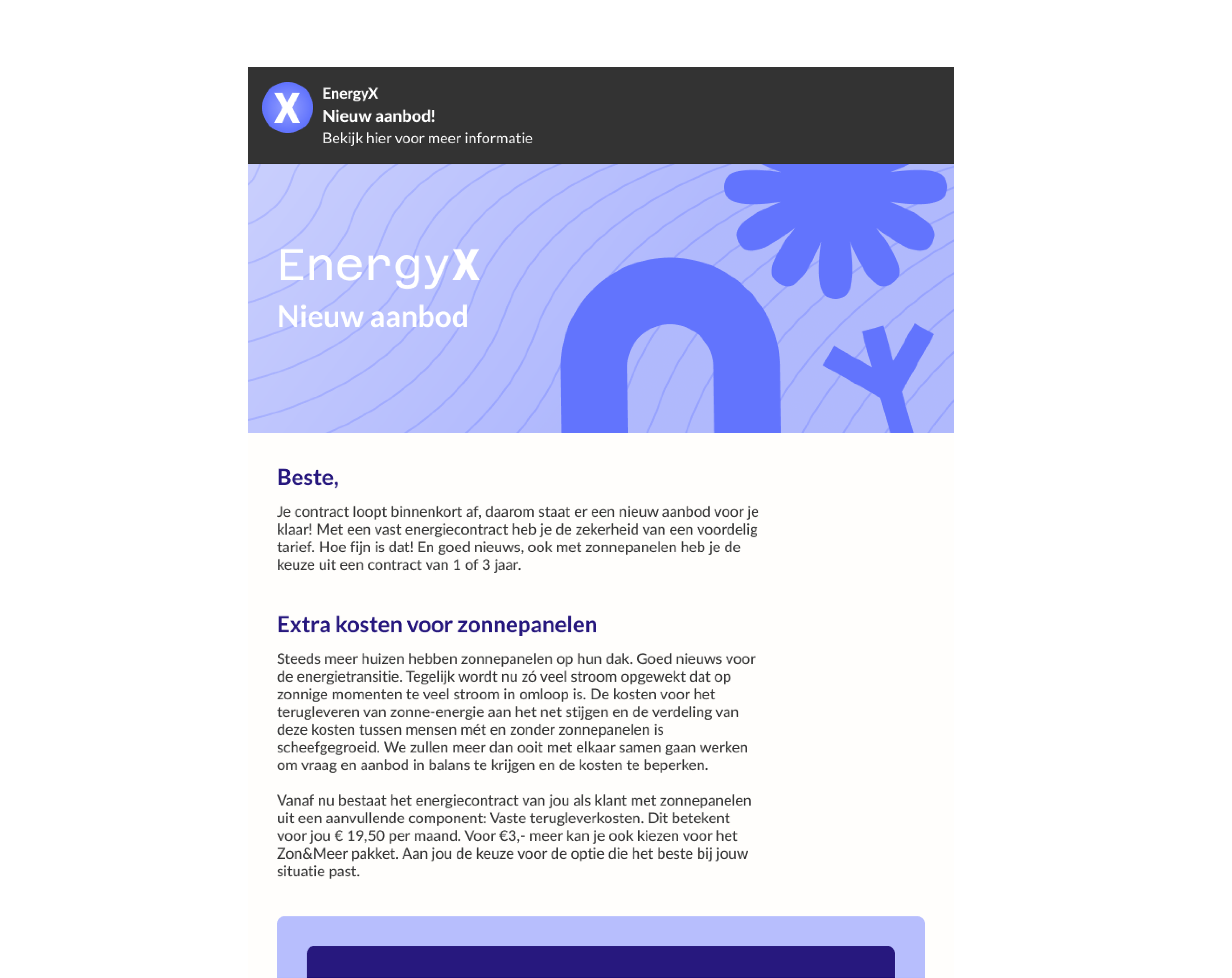
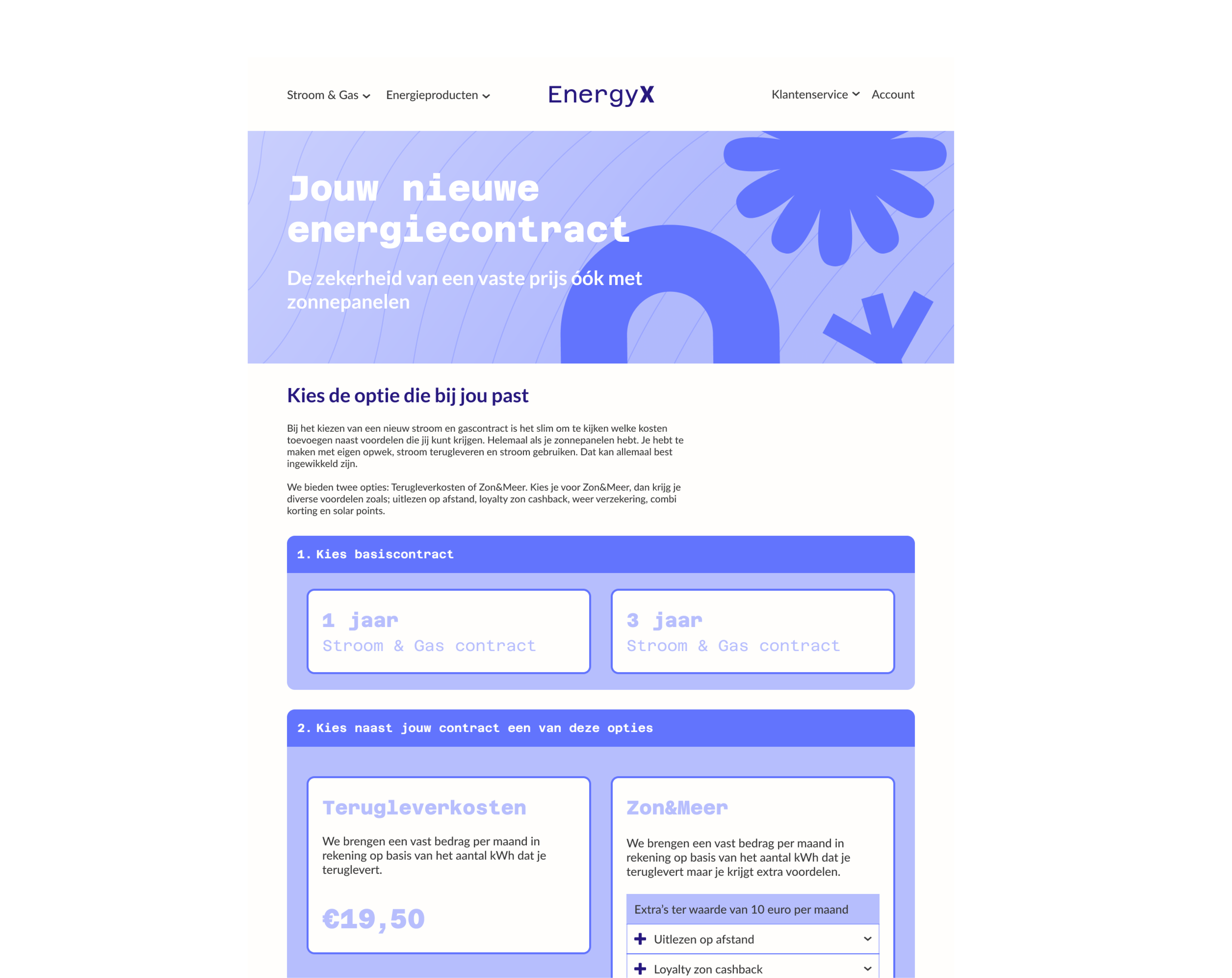
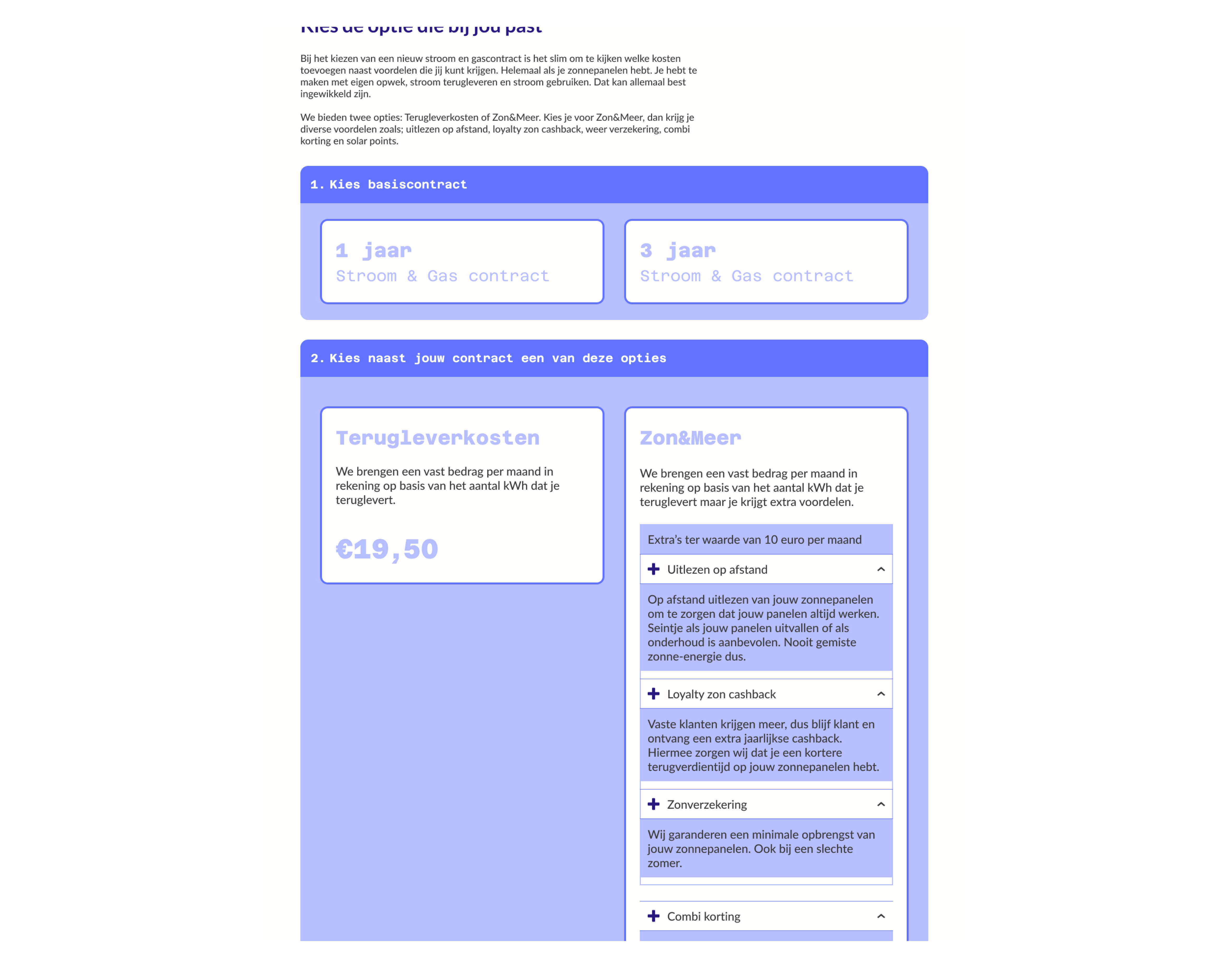
The nice thing about Lyssna is that we can do some overnight testing. While we were asleep, we were gathering valuable insights to help us in the next phase. I analyzed the test results and shared them with the team. The extras of the more expensive option needed to be written down more clearly to be more appealing to the users.
We wanted an actual prototype by the end of the third day. So, a team calculated what we could give to the potential client in the more expensive package, and the team I was part of started creating the prototype.
The biggest challenge was that the design of the prototype did not resemble that of Essent. This was a new idea, and we wanted to avoid revealing it to our competitors. So, I needed to create a whole new brand identity in 30 minutes, which the AI web generator of Framer helped with. I described the company, the type of page, and the kind of colors, and the generator did the rest. It was great to show what I had in mind to others quickly. Based on that agreement, I created a newsletter and a page where people could select the type of contract.
The fact that we were able to communicate more about the extras resulted in a new design challenge. After some sketching, I decided to make some accordions to show the title of the extra and give additional information when the tester wanted it. This had some challenges in Figma because I wanted to use components, but this resulted in content being copied to the wrong places. So, after some testing and some late hours, I figured out what the problem was, and the prototype was born.
When the prototype was done, I quickly created a test script so that team members could use it to do the testing with participants. Fortunately, we had already arranged the testers, so we were able to start the interviews at the beginning of the fourth day. We created groups of three, so we were able to do where I was the interviewer, and the others were listening and writing down the insights. After three interviews, we quickly synchronized to see what the first insights were. In the afternoon, we had three interviews. After that, we summarized the insights in one document.
After the sprints, we used one day to create a presentation for the stakeholders to update them about the results we created. This result inspired the operation teams to change the option that was selected, but we needed to make an even more realistic version of the idea. After this, the idea had to go through some iterations to make it more feasible and realistic for the company. A few elements of the sprint survived in the current iteration. But most of them were inspirations for new discoveries in bundling services.
This was a big project where many important people throughout the organization were watching. So it was interesting to see how much effort we needed to keep them informed and ensure they felt heard. This was different from the smaller design sprints I did for smaller companies.
A strategy sprint was new to me, so I didn't really know what to expect. But participating in one has given me new insights on how to use this in future projects.
The website generator of Framer really helped with the creation of the brand of the prototype. This was the first time I used AI to do it, and I really see the value of these types of tools. This led me to use tools like ChatGPT and Midjourney.